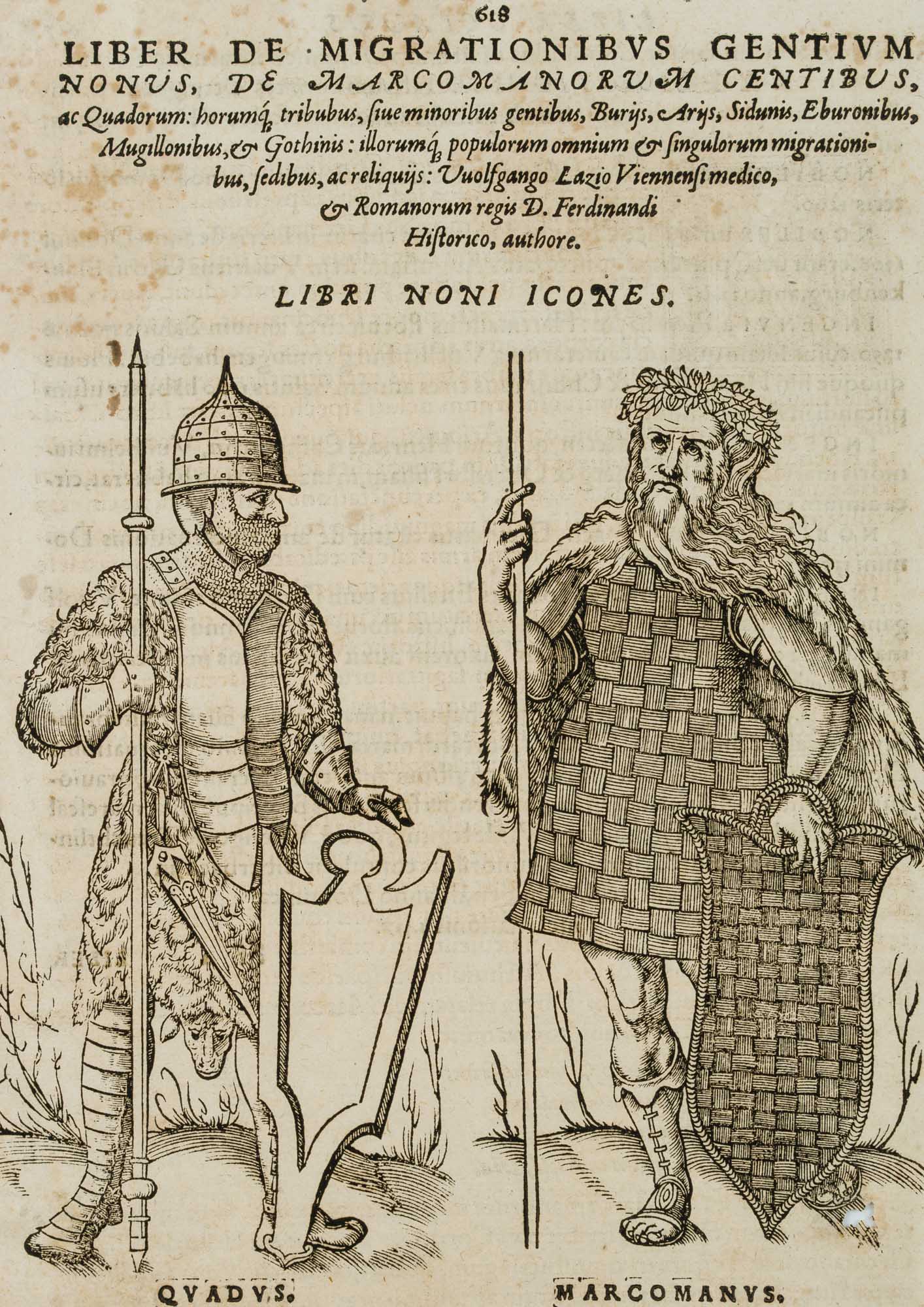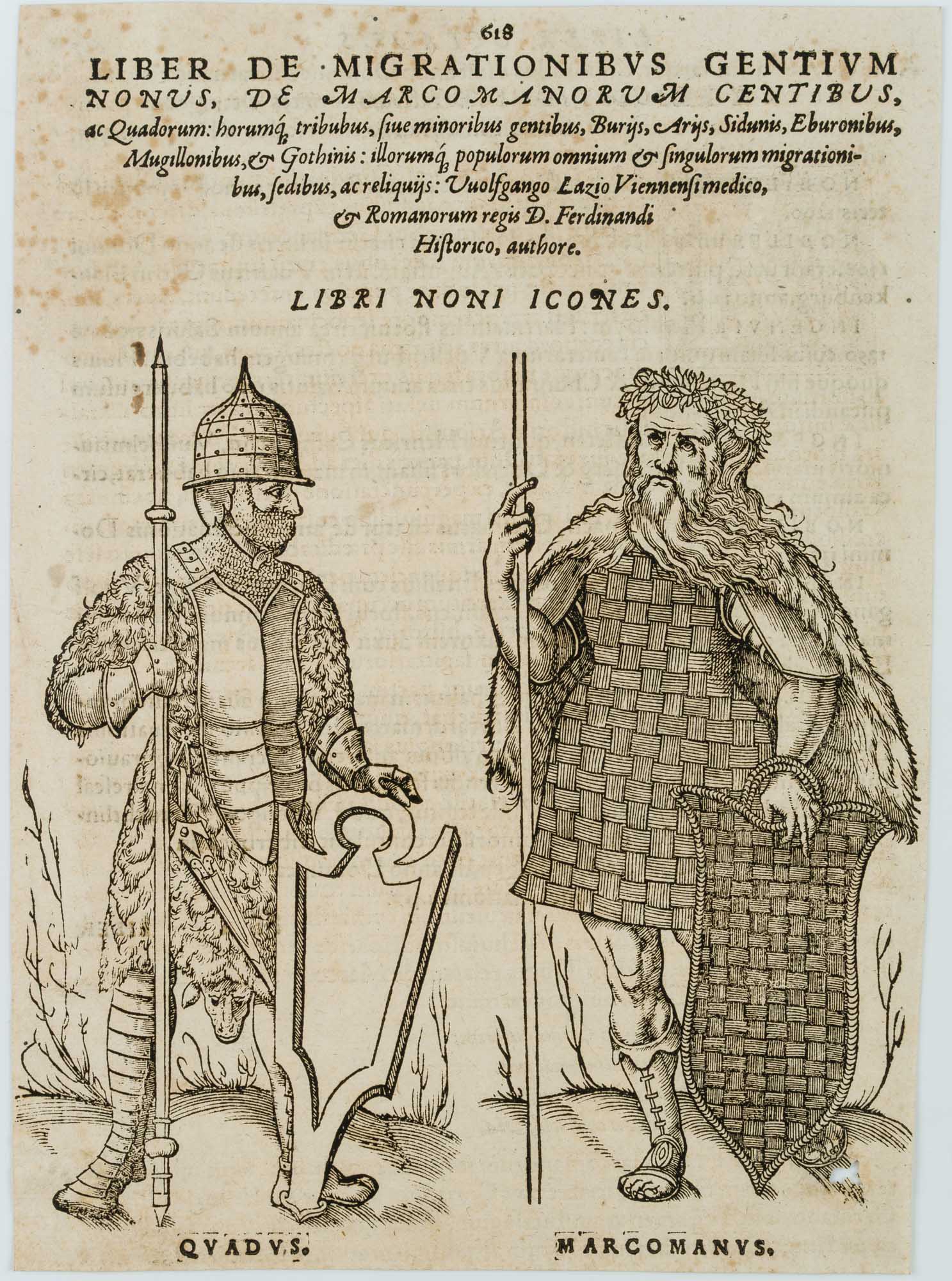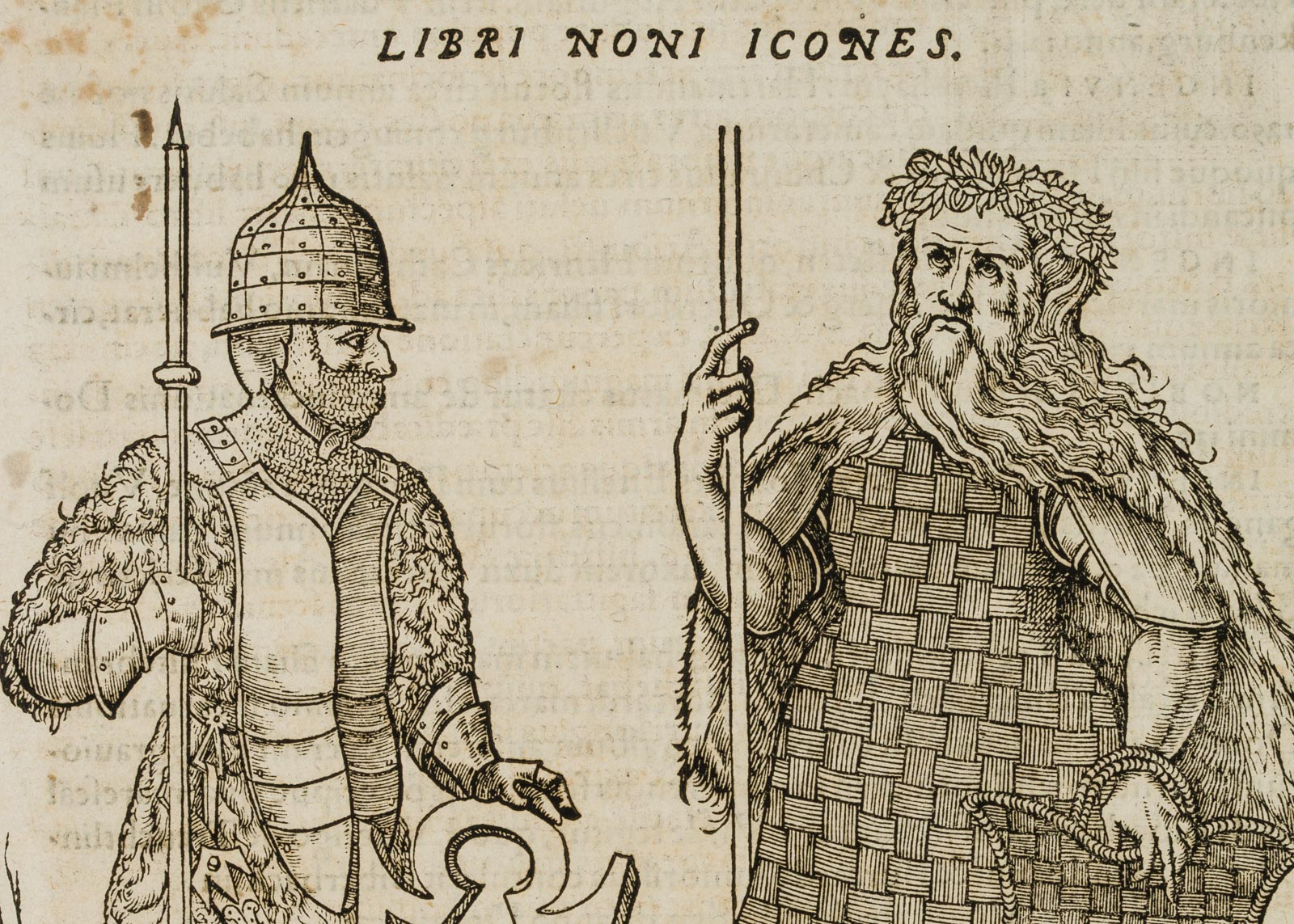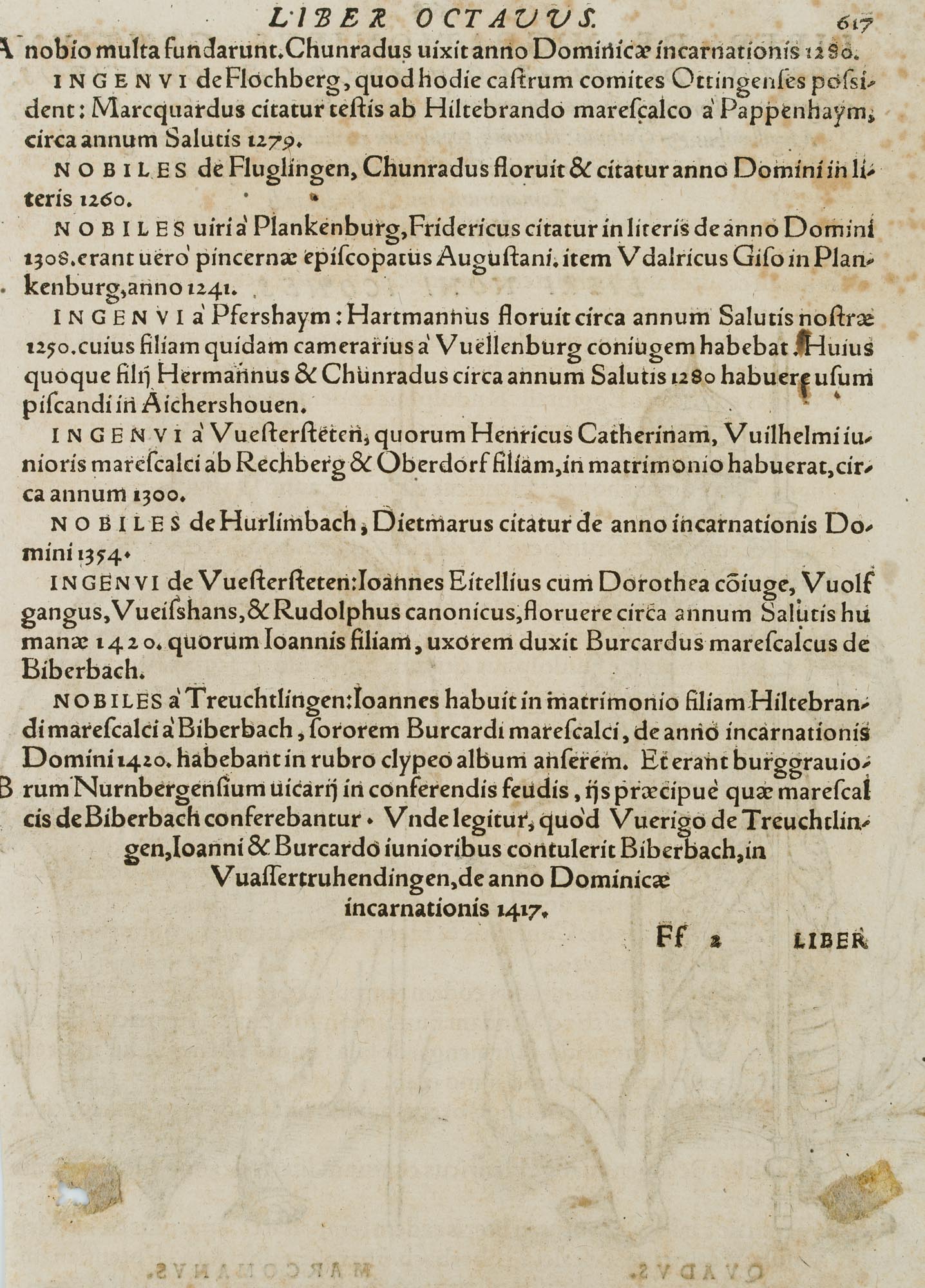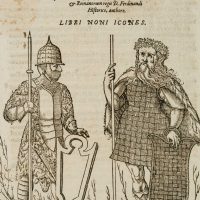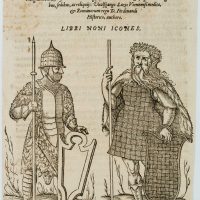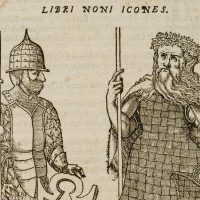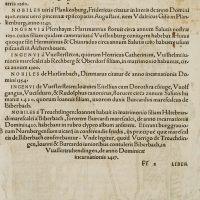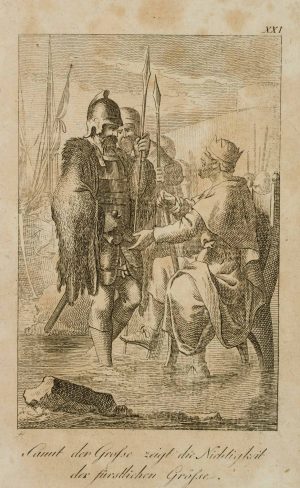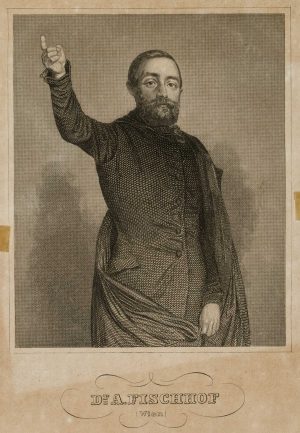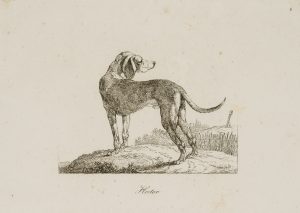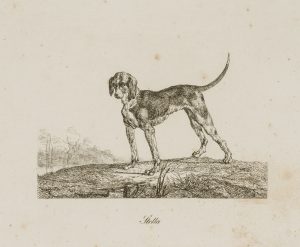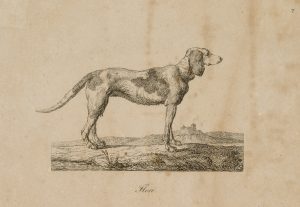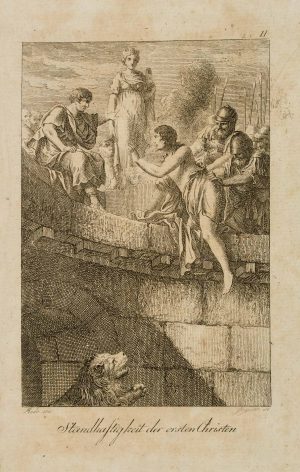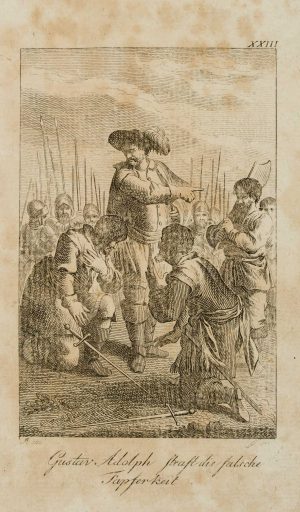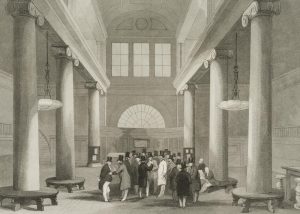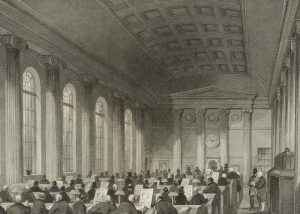Wolfgang Lazius (1514 Wien – 1565 ebd.), “Quadus & Marcomanus”, Westgoten, Römer, , Holzschnitt
- Technik: Holzschnitt auf Büttenpapier
- Bezeichnung: Unterhalb der Buchillustration bezeichnet mit den Namen der beiden Dargestellten, “Quadus” und “Marcomanus”, zum Volksstamm der Westgoten gehörend, die vom antiken Rom unterworfen wurden. Aus der berühmten und sehr schön illustrierten Chronik der frühen europäischen Stämme bis zum 15. Jahrhundert: “De aliquot gentium migrationibus sedibus fixis, reliquiis, linguarumque, initiis (et) immutationibus ac dialectis”, Basel, 1557 (über die Völkerwanderung). Das Werk ist eine wertvolle Quelle an Information über die frühe Geschichte europäischer Stämme mit Berücksichtigung ihrer Bräuche und sozialen Strukturen sowie ihres religiösen Glaubens. Beinhaltet sind außerdem frühe Bezugnahmen zu Figuren aus dem Nibelungenlied. Das Werk ist illustriert mit einundzwanzig außergewöhnlichen Holzschnitten, die auf Zeichnungen des Autors zurückgehen.
Aus der Hand des Wolfgang Lazius, humanistischer Gelehrter und wichtige Persönlichkeit in Wien sowie in der Geschichte der Kartographie. Er verfasste die erste gedruckte Stadtgeschichte Wiens mit von ihm selbst gestochenen Blättern und war Professor der Medizin an der Universität Wiens. Außerdem fertigte er als Kartograph eine Landbeschreibung Ungarns an. - Datierung:
- Beschreibung: Außergewöhnliche Graphik, Seite 617/618 eines Buches, verso mit lateinischem Text. Über der Darstellung auf Seite 618 betitelt: “LIBER DE MIGRATIONIBUS GENTIUM NONUS, DE MARCOMANORUM GENTIBUS”.
- Schlagworte: Porträt, Militär, Österreich, Figürlich, Vor 1700
- Größe: 24,4 cm x 17,3 cm
- Zustand: Der Holzschnitt macht einen wunderbaren Eindruck. Stockfleckig und minimal knickspurig; an der unteren Blattkante Klebereste einer alten Montierung; kleine Fehlstelle in der rechten unteren Blattecke.
English Version:
Wolfgang Lazius (1514 Vienna – 1565 ibid.), “Quadus & Marcomanus”, Visigoths, Romans, , Woodcut
- Technique: Woodcut on
- Inscription: Inscribed below the book illustration with the names of the two sitters, “Quadus” and “Marcomanus”, belonging to the tribe of the Visigoths, who were subjugated by ancient Rome. From the famous and beautifully illustrated chronicle of the early European tribes up to the 15th century: “De aliquot gentium migrationibus sedibus fixis, reliquiis, linguarumque, initiis (et) immutationibus ac dialectis”, Basel, 1557 (on the migration of peoples). The work is a valuable source of information on the early history of European tribes, taking into account their customs and social structures as well as their religious beliefs. It also includes early references to figures from the Nibelungenlied. The work is illustrated with twenty-one exceptional woodcuts based on drawings by the author.
From the hand of Wolfgang Lazius, humanist scholar and important figure in Vienna as well as in the history of cartography. He wrote the first printed city history of Vienna with sheets engraved by himself and was professor of medicine at the University of Vienna. He also produced a land description of Hungary as a cartographer. - Date:
- Description: Exceptional print, page 617/618 of a book, with Latin text on verso. Titled above the illustration on page 618: “LIBER DE MIGRATIONIBUS GENTIUM NONUS, DE MARCOMANORUM GENTIBUS”.
- Keywords: before 18th century, Figurative, Portraits, Austria,
- Size: 24,4 cm x 17,3 cm (9,6 x 6,8 in)
- Condition: The woodcut makes a wonderful impression. Foxing and minimal creases; at the lower edge of the sheet remains of an old mounting; small loss at the lower right corner of the sheet.

